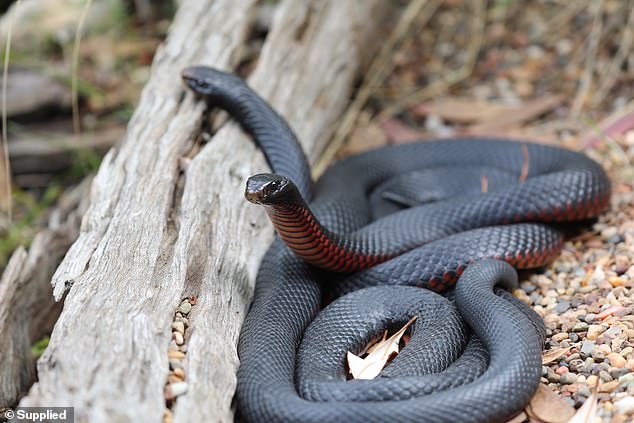Urgent warning for Aussies as unseasonably hot weather sparks an early ‘snake season’
Australians have been warned to be on the lookout for snakes as rising temperatures cause the reptiles to appear in the wild.
According to experts, the unusually warm spring weather has led to an increase in the number of snake sightings, including the deadly brown snake that is responsible for most of the fatal snakebites in the country.
‘Normally, snakes don’t come out of hibernation until September. However, due to the unusually warm weather, experts warn that snakes could be active much earlier this year,’ explains Billy Collett, operations manager at Australian Reptile Park.
Cold-blooded reptiles such as snakes often seek out cool, hidden places to escape the heat.
To avoid unexpected encounters with potentially dangerous snakes, it is important to take some precautions.
“All households should keep the lawns around their homes mowed and well maintained, and prevent the accumulation of firewood scraps or branches,” he explained.
‘Tin plates or household items like these stacked up can attract heat and provide the perfect man-made habitat for snakes. These areas provide a safe home for snakes while they sit in stealth mode waiting for prey to eat, and if startled, they will defend themselves by biting.
Smaller snakes prefer to hide among thick bushes, as these keep them warmer during the day and keep the cold-blooded reptile warm at night.
Snakes are not aggressive by nature and prefer to retreat. They only attack humans if they are attacked, provoked or captured.
“It is important that all Australians know not to harm others,” Mr Gollett explained.
Mr Collett added that people should avoid any encounter with a snake, regardless of the species.
There are approximately 140 different species of snakes living in Australia, but 100 of them are venomous and only 12 species are fatal if bitten.
The coastal and outback areas of the Northern Territory, Queensland and New South Wales are particularly dangerous, as they are home to some of the country’s most venomous snakes.
Experts have warned Australians of potentially deadly snakes (pictured the eastern brown snake) waking up early from hibernation this year due to an unusual heatwave

Experts have warned Australians there has already been a rise in the number of snake sightings, which they are calling ‘extraordinary’
These snakes include the Coastal Taipan, which is considered the second most venomous snake in the world, the Eastern Brown Snake and the Mainland Tiger Snake.
“Snake bites usually happen when people try to catch or kill the snake. If you do neither, you’re more likely to be okay,” he said.
In the event of a bite, the victim should remain ‘calm and motionless’ while emergency services are called so that he or she can receive treatment.
A bandage should also be wrapped tightly around the bite site and surrounding limb. All jewelry should be removed.
‘By applying the pressure-immobilising bandage, the venom cannot spread easily through the body, slowing down the envenomation process and giving the bite victim more time to seek medical attention in hospital,’ said Mr Collett.
‘Depending on the species of venomous snake, a bite can destroy blood cells, cause blood clots, heavy bleeding, and destroy tissue.
‘If proper first aid is not provided immediately, a fatal accident can occur within 30 minutes.’
